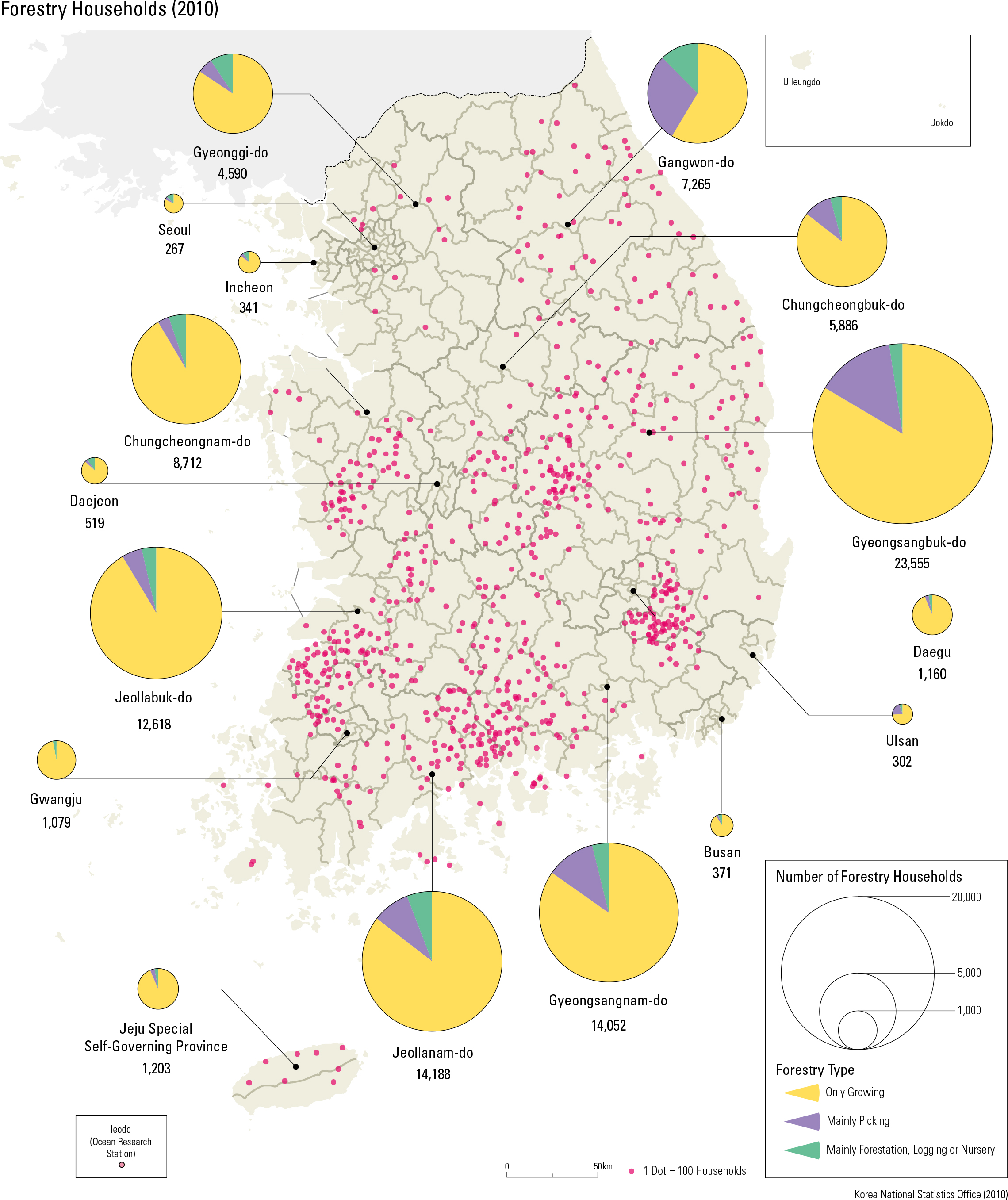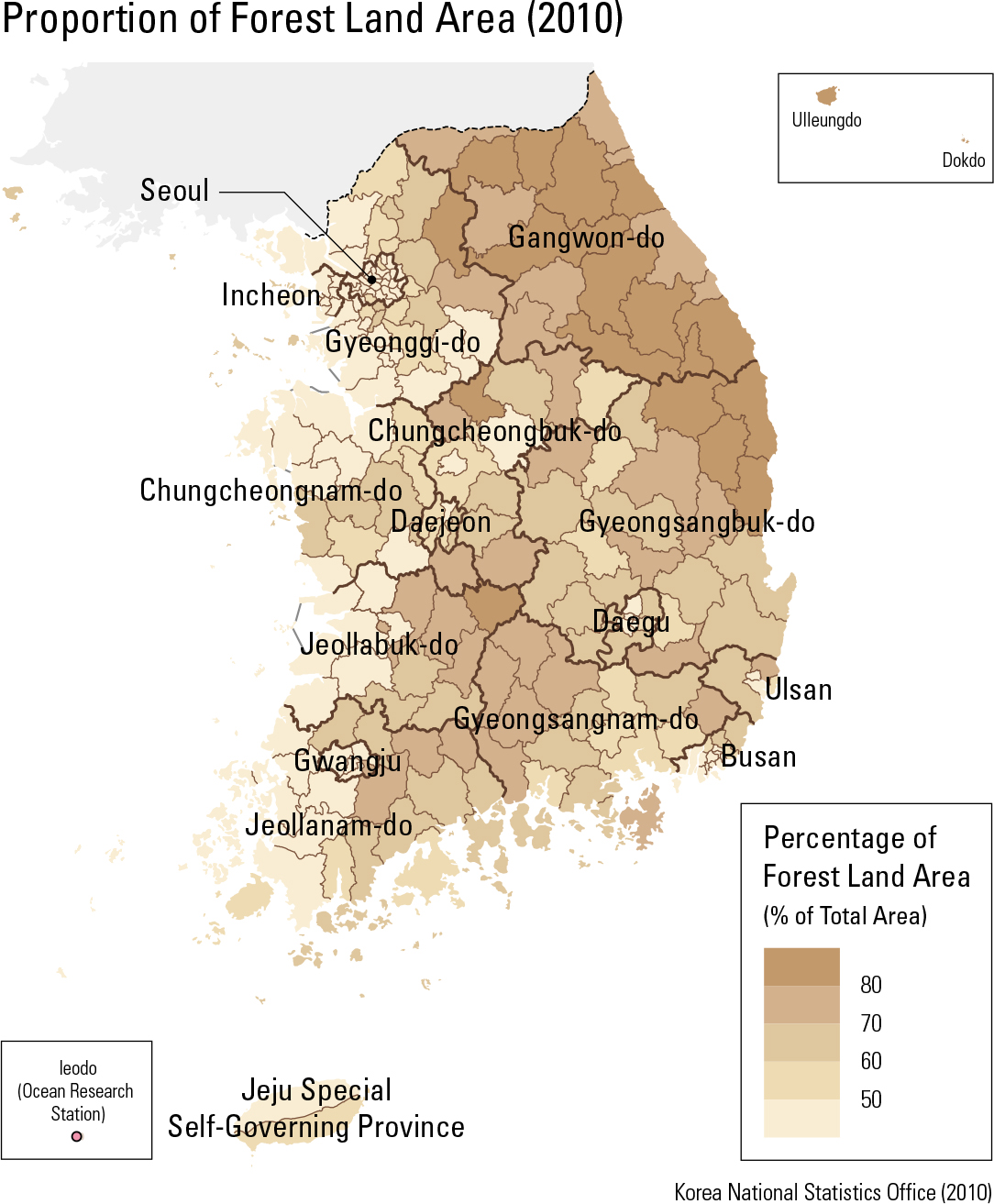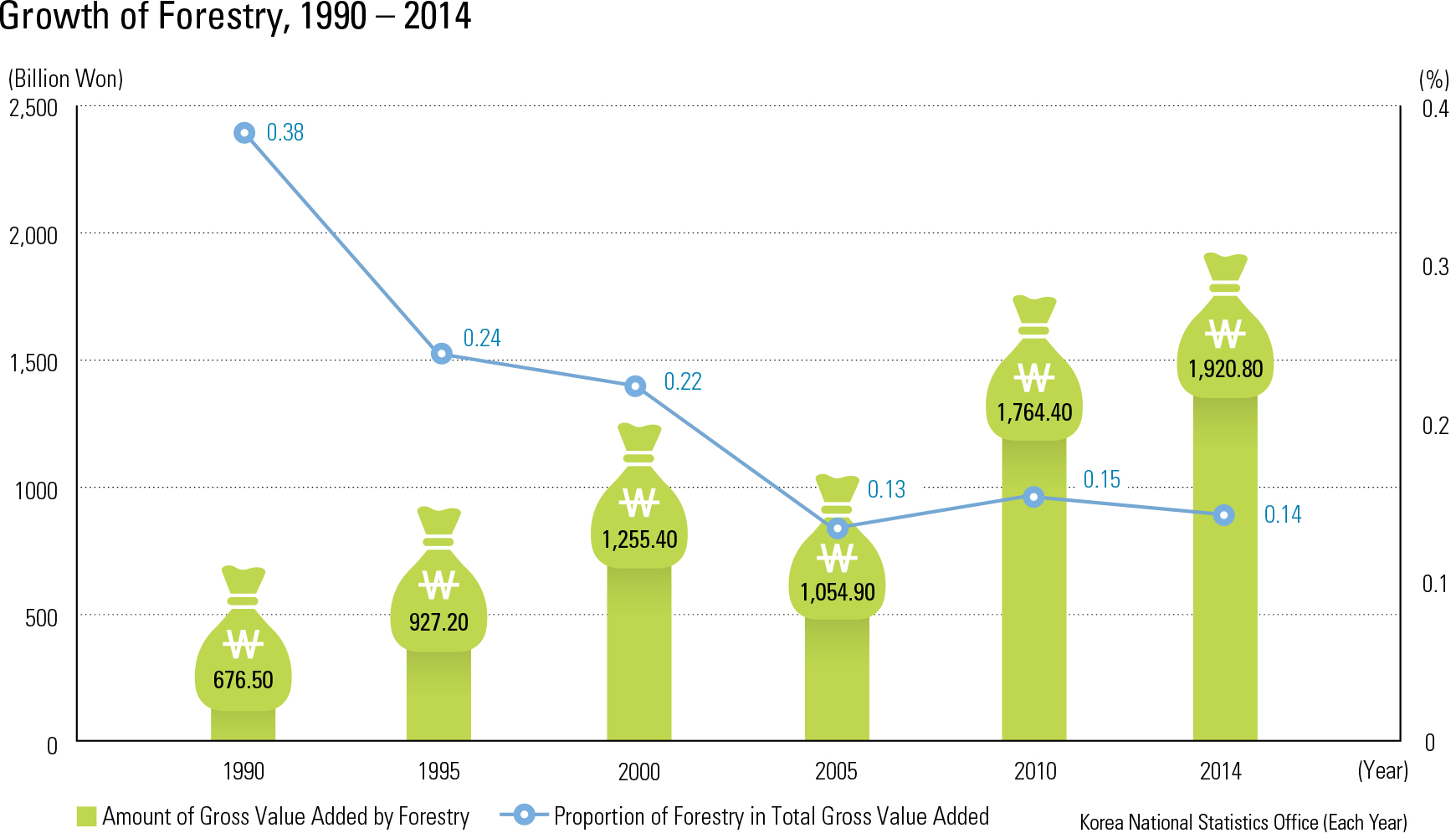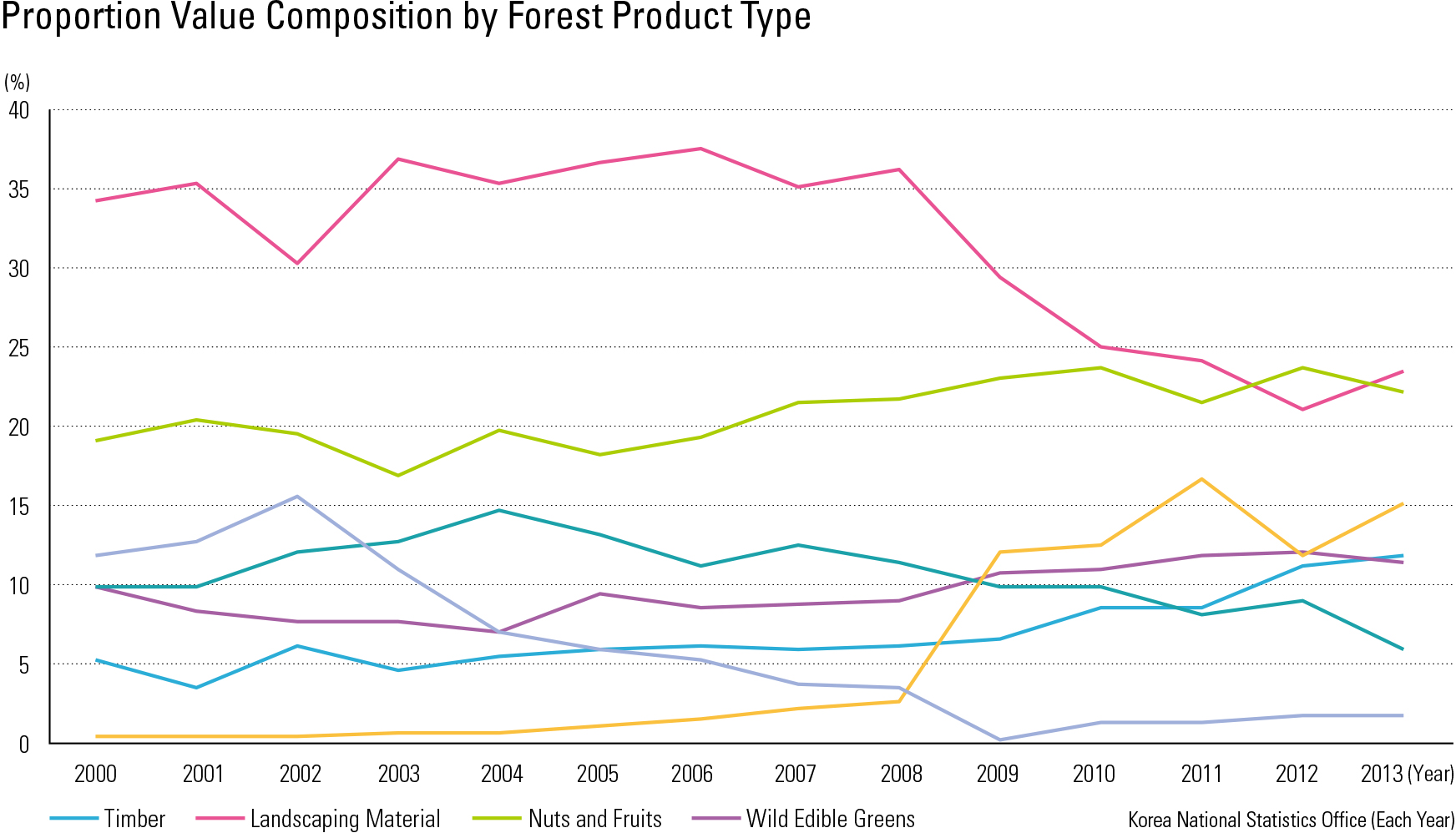English III
The share of Forestry to the national econo- my has traditionally been low. From 1990 to the present, the annual forestry production value remained in between 0.2 and 0.5% of the gross national product. However, forestry households, which main source of income is forestry, have increased slightly compared to the past. There were 66,320 forestry households in 2000, and the number increased to 95,557 households in 2014. This is because a lot of forestry products that used to be gathered from the forest are cul- tivated directly now. As a result, it is dif cult to distinguish forestry households from agricultural households. In 2014, 96.1% of forestry house- holds cultivated forestry products. This change in the forestry households is also re ected in the re- gional distribution of forestry households in 2010. In fact, more forestry households are found in the traditionally agricultural regions of Jeollanam-do, Jeollabuk-do, Gyeongsangnam-do, and Gyeong- sangbuk-do. Gangwon-do, a relatively well-for- ested province, has only 7.6% of the country’s forestry households. In Gangwon-do, a higher percentage of forestry households are engaged in forestation, logging, nursery, and collecting of herbs than in any other cities or provinces. Production value composition by forest product has also changed in the same period. The produc- tion of wild edible greens, herbs, and fruits from fruit-bearing trees has gradually increased. In the past, these forest products were mainly gathered and collected from the wild, but in recent years they have been cultivated in large quantities in the eld, resulting in a rapid increase in yield and production value. Also, the increase in cultivated forestry products has been a primary contributor to the increase in total forestry production value.
page_2 |




